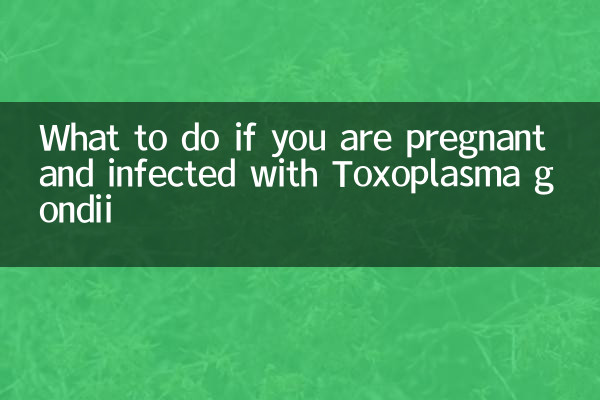What should I do if I am infected with Toxoplasma gondii during pregnancy? Network-wide hotspot analysis and response guide
Toxoplasma gondii infection is a topic of great concern among pregnant women, especially in the past 10 days. It has been one of the hot topics on the Internet. This article will combine recent hot topics to provide structured data analysis and practical suggestions for pregnant mothers.
1. Current status and hotspot data of Toxoplasma gondii infection

| Hot keywords | Search volume trends | Main discussion platform |
|---|---|---|
| Toxoplasma screening during pregnancy | up 42% | Mother and baby forum/Xiaohongshu |
| Pets and Toxoplasma gondii | up 35% | Weibo/Zhihu |
| Toxoplasma antibody test | up 28% | Medical science platform |
| Raw meat infection risk | up 19% | Short video platform |
2. Analysis of infection routes and high-risk behaviors
According to recent interviews with medical experts, the main transmission routes of Toxoplasma gondii include:
| route of infection | risk level | protective measures |
|---|---|---|
| Contact with cat feces | ★★★★ | Avoid cleaning cat litter/wear gloves |
| eating raw meat | ★★★☆ | Thoroughly heated to above 71°C |
| Unwashed fruits and vegetables | ★★☆ | Washing with running water + peeling |
| soil contact | ★★☆ | Wear gloves when gardening |
3. Response plan after confirmed infection
1. Medical examination process
The standardized process recently recommended by obstetrics and gynecology experts from tertiary hospitals:
| Check items | Best gestational age | Detection meaning |
|---|---|---|
| TORCH screening | 8-12 weeks pregnant | Antibody type identification |
| IgM/IgG test | When suspected | Judgment of infection stage |
| amniocentesis | After 18 weeks of pregnancy | Fetal infection confirmed |
2. Comparison of treatment options
Organized according to the latest international guidelines:
| infection stage | Recommended medicine | Treatment cycle |
|---|---|---|
| acute infection in early pregnancy | spiramycin | 3 weeks in a row |
| Infections during second and third trimester of pregnancy | Sulfadiazine + Pyrimethamine | Use alternately until delivery |
| Confirmed fetal infection | Combined medication + ultrasound monitoring | Individualized plan |
4. Preventive Measures Top 5 Popular Reviews on the Internet
Comprehensive recommendations from various platforms:
| Precautions | Implementation points | effectiveness |
|---|---|---|
| pet management | Indoor feeding/cooked food feeding | Reduce 90% risk |
| kitchen isolation | Raw and cooked food knives separated | Reduce risk by 85% |
| dietary taboos | Avoid raw pickled/soft-boiled eggs | Reduce 80% risk |
| personal protection | Wash your hands thoroughly after gardening | Reduce risk by 75% |
| Regular screening | 1 time each in early, middle and late pregnancy | 100% control of the situation |
5. Questions and Answers from Experts
Regarding recent high-frequency consultation questions:
Q1: Do I have to give away cats at home?
The latest animal medical research shows that domestic cats with regular deworming and negative blood tests can be retained with scientific feeding and management.
Q2: Is it necessary to terminate the pregnancy if the antibody is positive?
Comprehensive judgment needs to be combined with IgM/IgG values and ultrasound examination. Only 20% of acute infections will cause fetal malformations.
Q3: Can non-invasive DNA replace amniocentesis diagnosis?
Current technology still uses amniotic fluid PCR testing as the gold standard, and the accuracy of non-invasive testing is about 85%.
Conclusion:Pregnant mothers should view the risk of Toxoplasma gondii rationally. There is no need to panic excessively, but they should also take basic protection. It is recommended to save the structured data table of this article for easy reference at any time. If you have a suspected exposure history, you must seek medical attention within 24 hours.

check the details

check the details